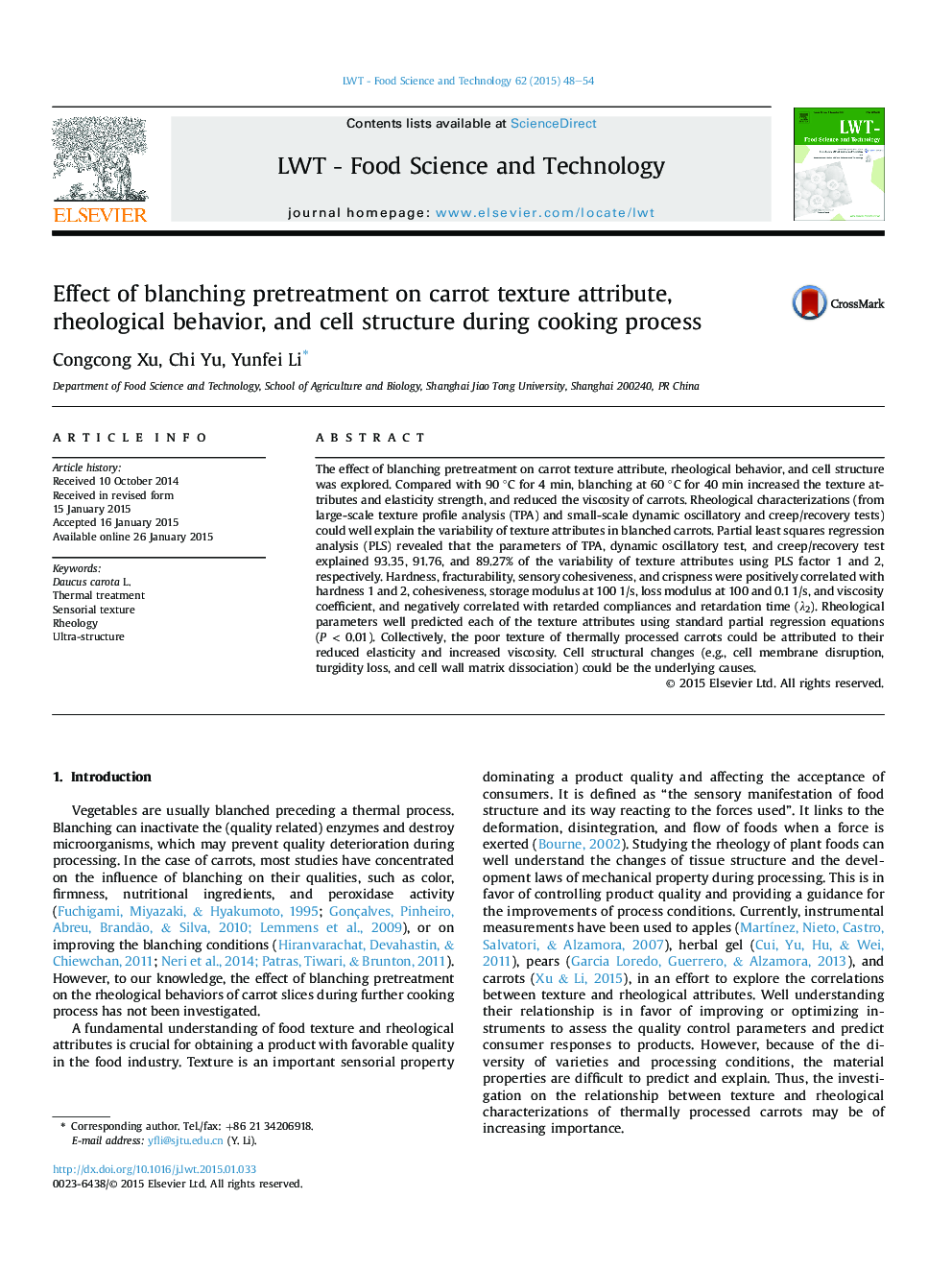| Article ID | Journal | Published Year | Pages | File Type |
|---|---|---|---|---|
| 6401248 | LWT - Food Science and Technology | 2015 | 7 Pages |
Abstract
The effect of blanching pretreatment on carrot texture attribute, rheological behavior, and cell structure was explored. Compared with 90 °C for 4 min, blanching at 60 °C for 40 min increased the texture attributes and elasticity strength, and reduced the viscosity of carrots. Rheological characterizations (from large-scale texture profile analysis (TPA) and small-scale dynamic oscillatory and creep/recovery tests) could well explain the variability of texture attributes in blanched carrots. Partial least squares regression analysis (PLS) revealed that the parameters of TPA, dynamic oscillatory test, and creep/recovery test explained 93.35, 91.76, and 89.27% of the variability of texture attributes using PLS factor 1 and 2, respectively. Hardness, fracturability, sensory cohesiveness, and crispness were positively correlated with hardness 1 and 2, cohesiveness, storage modulus at 100 1/s, loss modulus at 100 and 0.1 1/s, and viscosity coefficient, and negatively correlated with retarded compliances and retardation time (λ2). Rheological parameters well predicted each of the texture attributes using standard partial regression equations (P < 0.01). Collectively, the poor texture of thermally processed carrots could be attributed to their reduced elasticity and increased viscosity. Cell structural changes (e.g., cell membrane disruption, turgidity loss, and cell wall matrix dissociation) could be the underlying causes.
Related Topics
Life Sciences
Agricultural and Biological Sciences
Food Science
Authors
Congcong Xu, Chi Yu, Yunfei Li,
